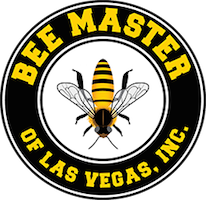Our buzzy little friends do more than produce tasty honey. Their journey from flower to flower and plant to plant helps grow food and encourages a healthy ecosystem. Bee pollination is crucial to the health of our environment, but what exactly do bees do during the pollination process?
What is bee pollination?
Bee pollination refers to the process by which bees transfer pollen from the male parts of a flower (the stamen) to the female parts (the pistil), resulting in fertilization and the production of seeds and fruit. This process is essential for the reproduction of many plants and the production of crops that humans rely on for food.
The Bee Pollination Process
How Bees Find Flowers
Bees find flowers through various methods, such as visual cues, olfactory signals, and electrical field detection! They’re attracted to vibrant colors and distance patterns from flowers, often standing out against the green backdrop of foliage. The aromatic scent of flowers serves as an olfactory beacon, drawing bees from a distance. Bees also have a crazy ability to sense the slight electrical charge flowers carry that changes when another bee has recently visited, providing information about the freshness of the flower’s nectar and pollen reserves.
The Energy Source: Nectar
Nectar, a sweet liquid secreted by flowers, is a critical energy source for bees, rich in the essential sugars they require for their high-energy lifestyle. When bees forage, they use their long tongues to extract nectar from flowers, storing it in their “honey stomach,” a separate compartment from their actual stomach. Once they return to the hive, the nectar is regurgitated and passed between worker bees, each time being further processed by enzymes in the bees’ saliva. The regurgitation process, combined with the evaporation of water from the nectar within the hive’s warm environment, gradually transforms the nectar into honey. Honey, which has a high sugar content, is the primary food source for bees.
Pollen & Nutrition
Pollen, collected from the stamens of flowers, stands as a nutritional powerhouse for bees, densely packed with protein, fat, vitamins, and minerals crucial to their diet. When bees visit flowers to gather nectar, they brush against the pollen, sticking their bodies in the “pollen baskets” on their hind legs. This pollen is transported back to the hive as a primary food source, especially for larvae. The protein and fat content is crucial for the development and growth of bee larvae, ensuring their maturation into healthy adults.
Buzz Pollination
Some bees exhibit behaviors like “buzz pollination,” which improves pollination efficiency. In this method, bees hold onto flowers and vibrate their muscles, creating a buzz that releases the pollen grains. This specialized technique is highly effective for flowers that require specific vibration frequencies to release pollen, showing the unique adaptation between plants and pollinators. Bumblebees stand out as pollinators using their unique “buzz pollination” skill to dislodge pollen from plants like tomatoes and blueberries.
Live Bee Removal in Las Vegas
While we love our buzzing beings, they sometimes tend to make their home in unsafe places around your home or place of work. If you find yourself in a bee predicament, call the masters of safe bee removal, Bee Masters of Las Vegas, for a free quote!
